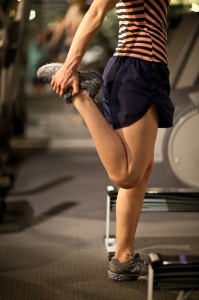 Spring is in full swing. And if you’re a runner, this means that outdoor racing season is in full swing too! This time of the year is very exciting for runners looking to accomplish new goals, or for those joining the running scene after winter hibernation.
Spring is in full swing. And if you’re a runner, this means that outdoor racing season is in full swing too! This time of the year is very exciting for runners looking to accomplish new goals, or for those joining the running scene after winter hibernation.
Whether you’re a beginner, or an advanced runner, injuries are bound to happen. Running may put a significant strain on your muscles, leading to a long list of common injuries. Sometimes these injuries are the result of an acute injury caused by a fall or twist. Othertimes running injuries happen overtime from overuse, inadequate footwear, or from certain physical maladies.
It’s important for all runners to understand some of the most common running injuries. This will not only help you to prevent injuries from happening, but it can also put you on the road to recovery if you do find yourself injured. Here is an overview of 5 common running injuries that many runners experience:
- Runner’s Knee: This injury is typically associated with overuse, while it is known for several causes. Runner’s knee happens when your kneecap moves out of alignment. This is more likely when the cartilage in this area becomes worn down. Pain is often felt around the kneecap when you are going up or down stairs, squatting, or sitting with your knees bent. Anti-inflammatory drugs, stretching, and icing the area may effectively treat runner’s knee.
- Stress Fracture: A stress fracture is a small crack in the bone that is associated with pain and discomfort. For runner’s, this is often located in the shin or feet. Sometimes starting a new physical activity can cause a stress fracture. Overuse can also trigger this common sports injury. Pain from a stress fracture oftentimes improves with rest.
- Shin Splints: This pain is located in the front or inside of the lower leg, known as the tibia. Shin splints are often caused when you change your workout or increase a workout too quickly. The best way to treat shin splints is to rest, stretch, and ice the affected area. Compression socks can also be useful.
- Muscle Pulls: This becomes an issue after overstretching a muscle like your hamstrings, quadriceps, calves, and groin. Sometimes this injury results in a small tear or it can escalate into a muscle tear which feels like a popping sound. Initial treatment for a muscle pull follows the RICE protocol: Rest, Ice, Compression, and Elevation.
- Blisters: Although blisters don’t appear to be a big concern, left untreated these can really hamper your workout. Blisters are fluid filled sacs on the surface of the skin, caused by friction. To lower your risk for developing blisters begin by using new shoes gradually. Try to wear good socks with a double layer and apply petroleum jelly to areas prone to blisters.
All of these common running injuries tend to remain less serious, unless left untreated. To prevent these common injuries from happening, always listen to your body. It’s advisable to warm-up and stretch before you run to help avoid common injuries. If you feel consistent pain in an area of the body and it does not get better with rest, it might be time to seek a medical professional.
Don’t forget to invest in good running shoes with plenty of support, and to dress appropriately to increase safety while running. It’s important to remain vigilant and attentive when running on busy roads. Running can be a very rewarding activity if your body is adequately stretched and prepared for the road ahead!

Recent Comments